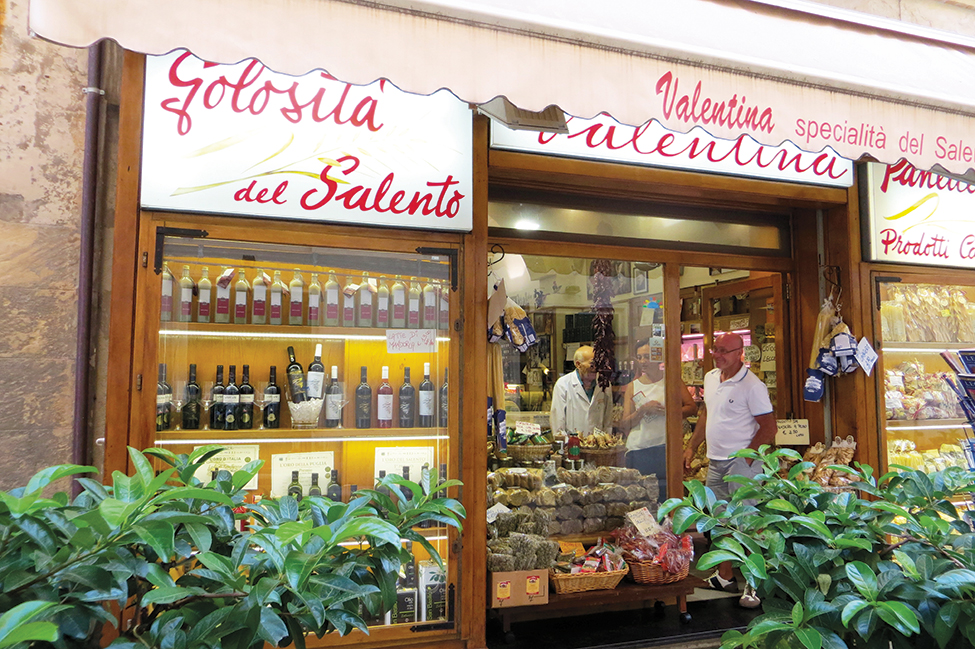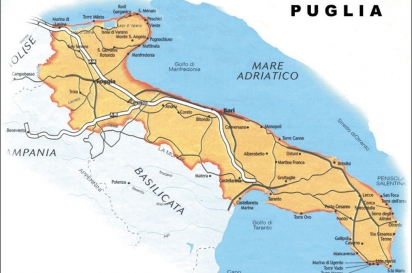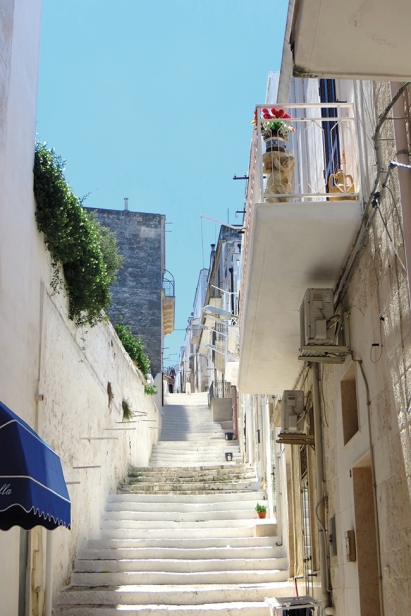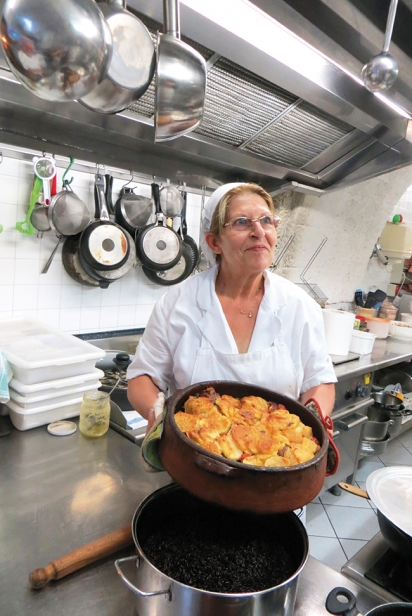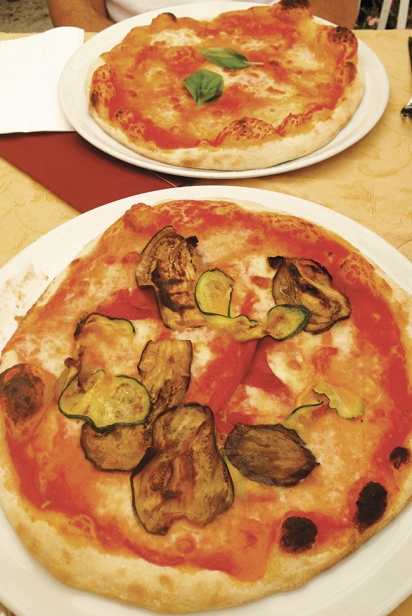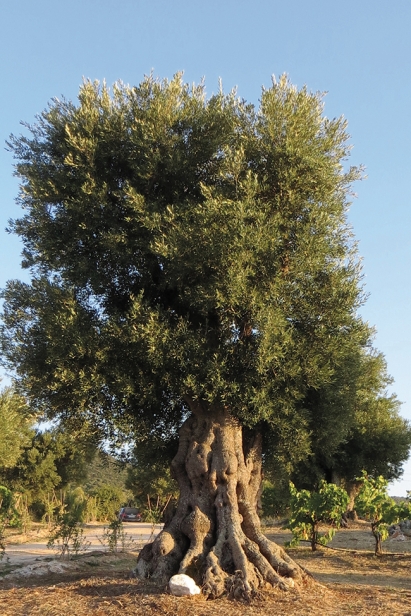Puglia: An Eating Adventure
Americans love Italy. The food is amazing, the wine divine, and the architecture and artifacts leave our mouths agape when we aren’t chewing. But when tourists throng the sweltering streets of Florence and Rome, Italians go elsewhere on holiday. Many head south to Puglia, the heel of Italy’s boot, and the southernmost region of the peninsula, a place they call Salento.
Puglia—pronounced A-puh-lia—can be a trek to get to. You must first fly to a major hub, then connect to the local airport at Bari or Brindisi. Then you have to rent a car if you really want to explore the region, but that’s what makes the trip an adventure. The upside of this is that you get to “do” Italy like an Italian rather than a foreigner, thus having a much more authentic experience than you would by heading to a major city and hiring a tour guide. Not that there’s anything wrong with that.
The Adriatic Sea runs down one side of the stiletto and the Ionian up the other, making for gorgeous, accessible beaches and gentle breezes that cut the heat. Inland is fertile farmland where the bulk of Italy’s durum wheat has been grown since Roman times, earning Puglia the moniker “the breadbasket of Italy.” An actual breadbasket on a Puglian table is full of savory delights: There are taralli—addictive pretzel-like breadsticks infused with white wine and olive oil—and the twice-baked, hard frisella that soften when juicy tomatoes and olive oil are heaped on top. There is focaccia, and bread with fennel seeds and olives, and more that are filled with cheese and ham. My favorite were tiny puccie—bite-size breads stuffed with oven-roasted cherry tomatoes—delectable with a bottle of local primitivo wine to wash them down. (Eat too many and you miss out on actual food, which is tantamount to a sin.) Vegetables thrive in Puglia’s clay-like soil; tomatoes, artichokes, courgettes, aubergines and especially olives. Indeed, 60 million gnarly trees carpet this land, producing 40% of the olive oil in Italy. And the glorious Mediterranean sun beams down upon it all.
Puglia is the home of la cucina povera, the cuisine of poverty. Yet, the abundance of fresh produce and olive oil makes it seem more like a feast of health and plenty, with the food positively glistening on your plate and palate. There is no word for “local” here, as nearly everything you eat and drink is grown and produced regionally; the fish and seafood are caught daily at ports that dot the coastline. Food is cheap and recipes are uncomplicated, with each dish containing just a few ingredients that explode with Mediterranean flavor.
To better understand the origins of Puglian cuisine, I arranged a visit to the famed Masseria Il Frantoio, located on the outskirts of Ostuni, the renowned “White City” in the province of Brindisi. “Masseria” means “ancient farmhouse,” and Puglia is dotted with these rustic but luxuriously renovated structures, many of which are now converted into hotels and restaurants.
Proprietor Armando Balestrazzi takes the traditional Puglian view that when you visit his establishment you are not a client but instead an honored guest. Deep relaxation permeates your soul as you wander through this 500-year-old working organic farm. In addition to its 4,200 olive trees, some well over 1,000 years old, the estate contains a walled 17th-century fruit grove and vegetable and herb gardens, all of which provide food for the estate and its “guests.” Balestrazzi has a deep and heartfelt understanding of what fosters a simpatico relationship between the land and its inhabitants. He knows how to provide comfort and beauty without impinging on the environment. He understands that Puglia is a region with a destitute past, but from this poverty grew a cuisine that is rich in flavor and healthfulness.
He tells the story of a land that, historically, had little rain and no cows to provide either milk or meat. Under these conditions it was incumbent upon the Nonna to inventively feed her family. She did so, and well, he says, with “the most original cooking in the world.” There are only female cooks staffing his kitchen because “the nourishment of the body and soul are a task that require the precision and sensibility of a woman and a mother.” Not everyone would agree with these sentiments, but it was hard to argue with the food.
Dinner was an event. Serving up dishes both traditional and eclectic, from ragout to flan comprised of carrots and beetroot from the garden, each of the eight courses was paired with an extra-virgin olive oil from the estate groves. All recipes had been developed by Rosalba, the Signora Balestrazzi. Quando il sospiro è al liquor d’olivo, the Masseria’s signature olive leaf liqueur, completed the meal.
But the real highlight of my visit occurred earlier in the day when I was led through the kitchen as the women prepared the evening meal. True to Balestrazzi’s maxim that “the men talk and the women work,” he narrated as we navigated the long and gleaming countertops where eggplant was being chopped for polpette di melanzane alla menta (little balls of eggplant with mint), and pasta dough sat calmly resting on a board. A beaming chef showed me a huge terrine filled with agnello con palate in coccio (lamb and potatoes from the oven), while a huge bowl of pears ripe from the orchard sat nearby, pretty as a still life, waiting to be made into composta di pere (pear compote) to accompany goat cheese laced with saffron. At dinner’s end the entire staff would come out for a well-deserved bow to applause from the 60 satisfied guests in the candlelit courtyard.
I had been invited to cook in the Masseria kitchen but was nearing the end of my trip and could not align my schedule to do so. I would have loved to learn the artfulness with which these women prepared food. The offer stands, and I cannot wait to return and learn the techniques of cucina povera. One cannot refuse such generosity of time and spirit under the Salento sun.


